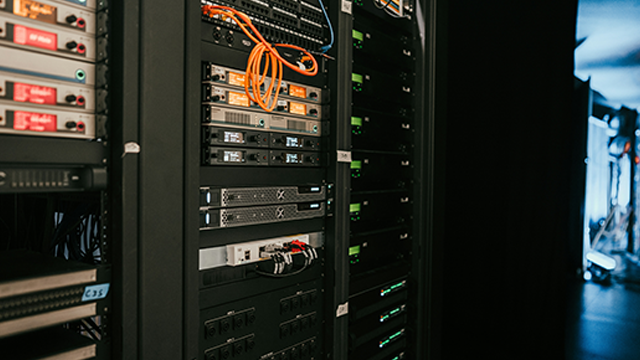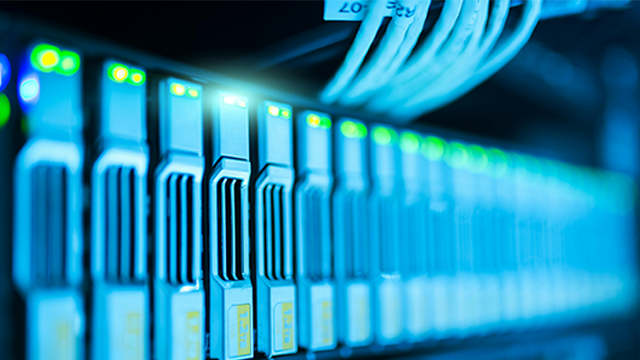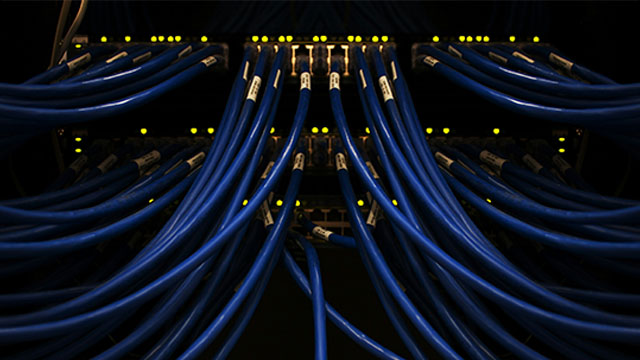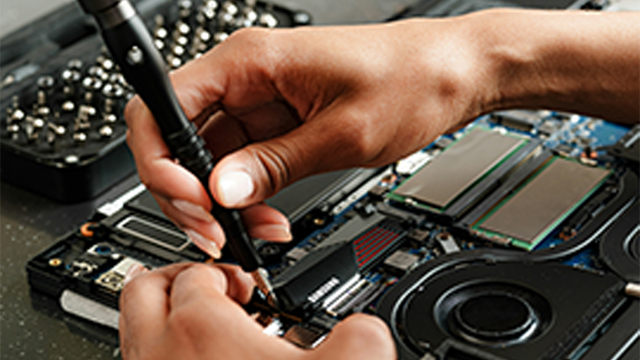Procurri is a provider of Third Party Data Center Maintenance, which allows businesses to outsource the ongoing maintenance and management of their data centers to specialists; so they can focus on delivering the great service that IT uptime permits. But when you work with Procurri for data center maintenance, what do you actually get? Here, we explain everything.
What is Data Center Maintenance?
Data center maintenance is the ongoing process of carrying out physical and virtual activities to keep the hardware within data centers up and running. This includes servers, storage systems, networking equipment, power and temperature ambiance systems.
Physical intervention may include the repair or replacement of hardware components. Virtual and remote intervention may include software and firmware updates.
Why do Data Centers need to be Maintained?
For most businesses, data centers are the backbone of their IT infrastructure. This means that if something goes wrong, the service delivered to end users may be compromised – or could even cease entirely. Ensuring your data center is properly maintained helps to:
- Minimize downtime
- Protect against hardware and software failures
- Maintain good performance
- Ensure energy efficiency and consistent temperature ambiance
- Avoid outages to service
- Ensure continued data security and compliance to security standards
- Extend the lifespan of hardware for as long as possible
- Reduce operational costs
- Maintain SLAs and targets for uptime.
The Primary Types of Data Center Maintenance
There are three types of data center maintenance: Preventative, Predictive, and Corrective.
Preventative Maintenance
Preventative maintenance refers to tasks being carried out to prevent any unnecessary issues occurring. Typically, this includes:
- Testing back-up power sources
- Cleaning and inspecting HVAC systems
- Checking fire suppression systems
- Updating firmware and software regularly
- Reviews of cable management
- Inspecting physical hardware for wear or faults.
Predictive Maintenance
Predictive maintenance refers to tasks being carried out that can detect issues before they occur and intervene before they do. Typically, this includes:
- Monitoring temperature and humidity
- Analysing vibration patterns across servers and cooling units
- Analysing power consumption patterns
- Using data-drive failure prediction tools (such as AI/ML tools).
Corrective Maintenance
Corrective maintenance refers to tasks being carried out to fix problems as and when they occur. Typically, this includes:
- Replacing damaged components
- Repairing faults in the network
- Restoring issues with power or cooling systems
- Addressing and rectifying software crashes or configuration errors.
The Main Areas of Focus for Data Center Maintenance
The configuration of data centers is that they are made up of a wide variety of parts. Almost all of these can be considered critical to the functionality of the center’s systems, but the following are the most important (and therefore most interfered with) in terms of data center maintenance.
Power Systems
Power systems provide the power that the data center runs from, and so can be considered the most critical factor – as if they fail, so will everything else within. Maintenance on power systems typically includes:
- UPS maintenance and battery health checks
- Generator testing and fuel system inspection
- PDU (Power Distribution Unit) monitoring
- Ensuring redundancy (across N+1 and 2N configurations).
Environmental Controls (often cooling)
With so much hardware operating in a confined space, the environment of a data center must be monitored and kept as ambient as possible – usually involving the use of cooling equipment to keep the temperature down to ensure the best possible performance. Maintenance on environmental controls typically includes:
- Cleaning and calibration of HVAC systems
- Containment checks of hot/cold aisle areas
- Ensuring the optimization of airflow through the server
- Monitoring the temperature, humidity and air quality within the data center’s physical environment.
Servers and Hardware
The physical majority of a data center is the servers and other associated hardware. Hardware maintenance typically includes:
- Firmware updates
- Replacing failing drives
- Replacing failing memory components
- Reseating any components that become loose
- Performing diagnostic and burn-in tests.
Network Infrastructure
The infrastructure around the network is what keeps the grouping together of all devices connected to a network, ensuring that the correct data can be served to and delivered from them. Network infrastructure maintenance includes:
- Updates to firmware in routers/switches
- Checking for port failures
- Monitoring of bandwidth and capacity
- Reviewing security and firewall configurations.
Security Systems
Of course, the best run data center is a secure data center. Keeping data safe is essential not just to customer trust and business reputation, but also to ensure compliance to security regulations and responsibilities. Security systems maintenance typically includes:
- Cybersecurity practices – patching, audits, intrusion detection
- Physical security measures – access controls, biometrics, cameras
- Fire suppression protocol – testing alarm and gas systems.
Data Center Maintenance Best Practices
There are certain best practices that businesses should try and uphold in their data center maintenance – whether they manage it wholly in-house or if they outsource it to a specialist firm like Procurri. These include:
Documentation
Logs of BAU (Business As Usual) activity alongside tests and changes should always be kept so that businesses can refer back to past activity as needed. This also allows for the reversion to previous versions of operations should a change happen and not be successful.
Automation
While physical data center intervention can’t necessarily be automated, there are plenty of software tools available to allow for virtual intervention and rectification as and when needed. Automated tools can also be used for monitoring, updates and software upgrades.
Auditing
Auditing and checking compliance against industry best practice standards as well as ensuring performance and functionality is as expected (if not better) should be carried out regularly so that the business has an overall picture of operations.
Remote Monitoring
Procurri offers 24/7 oversight with remote monitoring systems that keep an eye on data center functionality at all times. Furthermore, our systems work proactively to detect issues before they escalate – or in some cases, before they occur at all!
Ensuring Redundancy
Power, cooling and connectivity must be kept on continuously to ensure that a data center doesn’t fail if one power source malfunctions. As such, redundancy can be ensured by:
- Installing multiple UPS units (backups for batteries)
- Installing generators that can take over if an outage lasts a long time
- Installing dual power feeds to every server.
Sustainability in Data Center Maintenance
It’s no secret that Procurri operates as a Carbon Neutral business – we’re very proud of it! As such, we can offer businesses the opportunity to work with a sustainability-focused service provider, but also, we recommend and work with all of the following standards:
- Using free cooling and liquid cooling
- Optimizing airflow
- Switching to renewable energy sources
- Consolidating servers
- Optimizing virtualization
- Using energy-efficient hardware
- Allowing hardware to continue function post-EOSL date.
Post-EOSL Data Center Maintenance
All physical hardware reaches an EOSL (End of Service Life) point, at which point the OEM (Original Equipment Manufacturer) withdraws their maintenance support for the equipment and instead recommends that it is decommissioned and replaced by newer models. However, with this cycle happening on average between every 3-5 years, it’s not only a financially-expensive project to undergo but also results in over-consumption and unnecessary e-waste – making it extremely unsustainable and non-environmentally friendly.
Procurri offers vendor-neutral Third Party Maintenance, which means that even past the point of an OEM withdrawing warranties or support, they will take over the data center maintenance. This gives businesses the advantage of:
- Extending the lifespan of their assets and avoiding overconsumption
- Building up budget over a longer period of time to invest in new hardware as and when actually required
- A reduction in generated e-waste
- Continuing 24/7/365 maintenance practices that are not just to industry standard but also functioning no matter how varied a configuration is (legacy/multi-vendor/rare)
- Investing in more affordable data center maintenance packages than OEMs are able to offer
- Investing in more flexible data center maintenance packages than OEMs are able to offer
- Access to the world’s largest stockholding of data center hardware spare parts – with rapid delivery available as and when needed
- Access to flexible SLAs to fit the business’ needs and idiosyncrasies.
If you’re interested in learning more about the breadth of Procurri’s data center maintenance support, both on new, legacy and rare hardware, get in touch today. Our specialist teams can offer an unbeatable service and ensure your uptime and services provided to end users is as seamless as possible.





